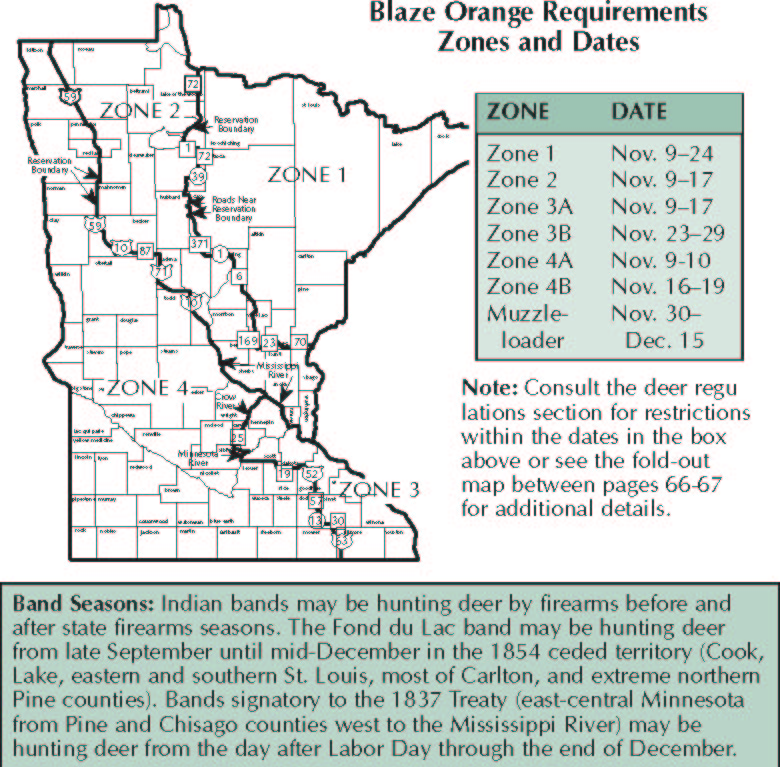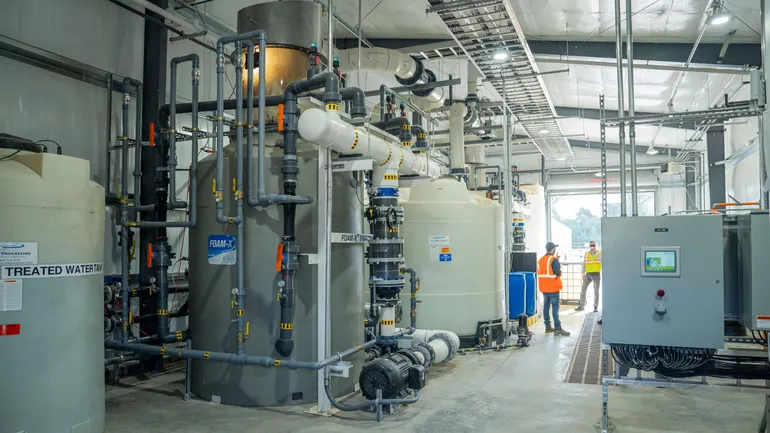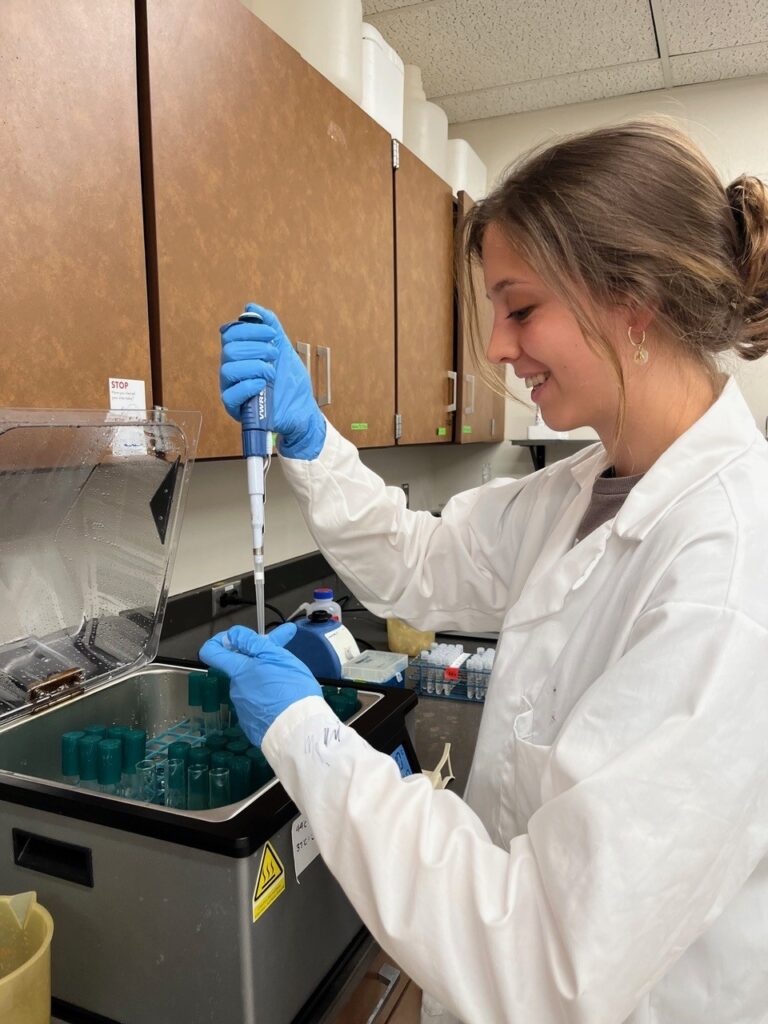News release: Water control structure project slated for East Park Wildlife Management Area in Marshall County – Minnesota DNR

Project Report: Nelson Slough Impoundment Restoration and Sustainable Development
Executive Summary
The Minnesota Department of Natural Resources (DNR) is initiating a multi-year project at the East Park Wildlife Management Area to upgrade critical water infrastructure. This initiative directly supports several United Nations Sustainable Development Goals (SDGs), primarily SDG 15 (Life on Land), SDG 6 (Clean Water and Sanitation), and SDG 17 (Partnerships for the Goals), by restoring a vital wetland ecosystem, ensuring sustainable water management, and leveraging collaborative governance.
Project Objectives and Alignment with SDG 15: Life on Land
The primary objective is the replacement of an aging water control structure and the improvement of embankments at the Nelson Slough Impoundment. This action is essential for the long-term ecological health of the area, directly contributing to SDG 15 targets for protecting, restoring, and promoting the sustainable use of terrestrial ecosystems.
Key Habitat Enhancement Goals
- Ecosystem Restoration: The project will address infrastructure that is beyond its expected lifespan, preventing potential failure and ensuring the future integrity of the wetland habitat.
- Biodiversity Protection: By increasing the capacity to manage water levels, the project will improve habitat conditions for waterfowl and a diverse range of other wetland-dependent wildlife species, thereby helping to halt biodiversity loss.
Implementation Timeline and Impacts
The project will be executed in distinct phases, with temporary impacts on local access and water levels.
- Phase 1 – Preparatory Drawdown: Beginning in the first week of August, a drawdown of the impoundment will commence to prepare the site for construction.
- Phase 2 – Construction: Major construction on the new water control structure and embankment is scheduled to begin in late fall 2025.
- Phase 3 – Project Completion: The project is expected to continue into 2027. Throughout this period, water levels will remain low, and hunter access to the Wildlife Management Area will be limited.
Collaborative Governance and Funding for Sustainability (SDG 6 & SDG 17)
This project exemplifies a multi-stakeholder approach to achieving sustainable development outcomes through strategic partnerships and dedicated funding mechanisms.
Multi-Stakeholder Partnership: Advancing SDG 17
The initiative is a formal partnership between the Minnesota DNR and the Middle-Snake-Tamarac Rivers Watershed District. This collaboration between state and local water governance bodies is a practical application of SDG 17 (Partnerships for the Goals), combining resources and expertise to achieve shared environmental objectives.
Sustainable Funding for Clean Water and Land: Supporting SDG 6
Partial funding is secured through the Outdoor Heritage Fund, which was established by the Clean Water, Land and Legacy Amendment. This funding source directly aligns with the principles of SDG 6 (Clean Water and Sanitation) and SDG 15 (Life on Land), as its use is constitutionally restricted to projects that:
- Restore, protect, and enhance wetlands, prairies, and forests.
- Protect and enhance habitat for fish and wildlife.
1. Which SDGs are addressed or connected to the issues highlighted in the article?
The article discusses a construction project focused on water management and habitat restoration, which directly connects to several Sustainable Development Goals. The primary SDGs addressed are:
- SDG 6: Clean Water and Sanitation – This goal is relevant because the project involves the construction of a new water control structure and embankment improvements to manage water levels in a wetland.
- SDG 15: Life on Land – This goal is central to the article, as the project’s main purpose is to improve and ensure the future of wetland habitat for wildlife.
- SDG 17: Partnerships for the Goals – The article explicitly mentions the collaborative nature of the project, highlighting a key aspect of achieving sustainable development.
2. What specific targets under those SDGs can be identified based on the article’s content?
Based on the specific actions and objectives described in the article, the following targets can be identified:
-
SDG 6: Clean Water and Sanitation
- Target 6.6: By 2020, protect and restore water-related ecosystems, including mountains, forests, wetlands, rivers, aquifers and lakes. The article’s core focus is the restoration and enhancement of the Nelson Slough Impoundment, a wetland ecosystem. The project aims to “ensure that we have valuable wetland habitat in the future,” and its funding is specifically allocated to “restore, protect and enhance wetlands.”
- Target 6.5: By 2030, implement integrated water resources management at all levels, including through transboundary cooperation as appropriate. The project demonstrates integrated management through the partnership between a state agency (Minnesota Department of Natural Resources) and a local governing body (“the Middle-Snake-Tamarac Rivers Watershed District”) to manage a shared water resource.
-
SDG 15: Life on Land
- Target 15.1: By 2020, ensure the conservation, restoration and sustainable use of terrestrial and inland freshwater ecosystems and their services, in particular forests, wetlands, mountains and drylands. The project is a direct action to restore an inland freshwater ecosystem (a wetland) located within the East Park Wildlife Management Area.
- Target 15.5: Take urgent and significant action to reduce the degradation of natural habitats, halt the loss of biodiversity and, by 2020, protect and prevent the extinction of threatened species. The project addresses this target by replacing “aging impoundment” infrastructure that is “beyond its expected lifespan” to prevent habitat degradation and by actively “improving habitat for waterfowl and other wetland-dependent wildlife species.”
-
SDG 17: Partnerships for the Goals
- Target 17.17: Encourage and promote effective public, public-private and civil society partnerships. The article highlights a public-public partnership, stating, “The DNR has partnered with the Middle-Snake-Tamarac Rivers Watershed District on the project.” This collaboration is essential for the project’s implementation.
3. Are there any indicators mentioned or implied in the article that can be used to measure progress towards the identified targets?
The article mentions or implies several indicators that can be used to measure progress:
-
Indicators for SDG 6 & 15
- Official Indicator (Implied): The project’s focus on restoring a wetland directly relates to Indicator 6.6.1: Change in the extent of water-related ecosystems over time. While the article doesn’t provide quantitative data, the successful completion of the project to “restore, protect and enhance wetlands” would result in a positive change in the quality and managed extent of this ecosystem.
- Project-Specific Indicator (Implied): The article states the project will improve “habitat for waterfowl and other wetland-dependent wildlife species.” Therefore, the health, population size, and diversity of these species in the East Park Wildlife Management Area post-construction would serve as a direct, measurable indicator of the project’s success in achieving its habitat improvement goals.
- Infrastructure Indicator (Mentioned): The completion of the “new water control structure and embankment improvements” is a tangible output indicator. The article notes the current infrastructure is “aging” and “beyond its expected lifespan,” so the new construction is a direct measure of progress in securing the wetland’s future.
-
Indicators for SDG 17
- Partnership Indicator (Mentioned): The existence of the formal partnership between the “Minnesota Department of Natural Resources” and the “Middle-Snake-Tamarac Rivers Watershed District” is a direct indicator of progress towards Target 17.17. The successful execution and completion of the project would further serve as a qualitative indicator of the partnership’s effectiveness.
- Financial Mechanism Indicator (Mentioned): The article mentions that “Partial funding for this project is provided by the Outdoor Heritage Fund.” This fund, created by a public vote through the “Clean Water, Land and Legacy Amendment,” serves as an indicator of a successful financial partnership model involving the state government and its citizens to achieve environmental goals.
4. Create a table with three columns titled ‘SDGs, Targets and Indicators” to present the findings from analyzing the article. In this table, list the Sustainable Development Goals (SDGs), their corresponding targets, and the specific indicators identified in the article.
| SDGs | Targets | Indicators |
|---|---|---|
| SDG 6: Clean Water and Sanitation | 6.6: Protect and restore water-related ecosystems. | Implied Indicator 6.6.1: Change in the extent and quality of the Nelson Slough Impoundment wetland ecosystem following restoration. |
| SDG 15: Life on Land | 15.1: Ensure the conservation and restoration of inland freshwater ecosystems.
15.5: Take action to reduce the degradation of natural habitats and halt biodiversity loss. |
Mentioned Indicator: Construction of new water control structure and embankments to replace aging infrastructure.
Implied Indicator: Improved habitat quality measured by the population and health of “waterfowl and other wetland-dependent wildlife species.” |
| SDG 17: Partnerships for the Goals | 17.17: Encourage and promote effective public partnerships. | Mentioned Indicator: The established partnership between the Minnesota DNR and the Middle-Snake-Tamarac Rivers Watershed District.
Mentioned Indicator: Use of the Outdoor Heritage Fund as a financial partnership mechanism. |
Source: dnr.state.mn.us

What is Your Reaction?
 Like
0
Like
0
 Dislike
0
Dislike
0
 Love
0
Love
0
 Funny
0
Funny
0
 Angry
0
Angry
0
 Sad
0
Sad
0
 Wow
0
Wow
0












































































